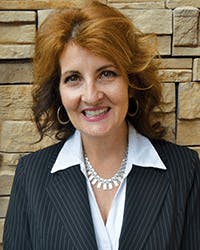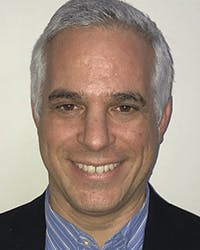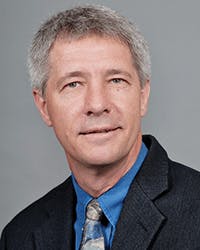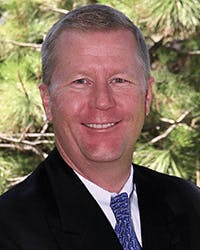Reviewing the Past and Learning From It —
In the ever-changing ICT/Telecom industry, it’s easy to focus on day-to-day tasks that help meet our company’s objectives. And with that, it’s even easier to get stuck in the weeds. Sure, we are productive, but are we accomplishing what matters most?
Successful leaders regularly set time aside to think about long-term and more strategic planning. And whether you’re part of one of the largest ICT companies in the country or one that is small- to medium-sized, it can pay dividends to look at what you’ve accomplished this year and how it relates to your focus for 2018.
That’s why we gathered our ICT Visionaries and asked them to share their thoughts about these 3 questions:
+ Share the biggest obstacle your company faced in 2017, and how your team solved it successfully.
+ What are the most challenging issues our industry must address in 2018?
+ What’s the best piece of advice you can give to anyone aiming to succeed in the ICT industry?
Sure, these are just a few of the questions we should ask ourselves at year-end. And you know as well as I: there are no right or wrong answers. The key is to take time to get out of the weeds and think. Today’s business environment is so dynamic that continuous improvement must include reviewing the past for its good and bad. And then learning from it.
+ Share the biggest obstacle your company faced in 2017, and how your team solved it successfully.
In late 2016 our company found itself at a crossroads. Despite a decade of steady growth and a product line that had expanded through close collaboration with our customers, we had started to ask ourselves "what’s next?"
Our customer base is a Who’s Who of broadband service providers, and we supplied them with products that precisely fit their needs. With experienced leadership and a team that was motivated and customer focused, we were clearly poised for further success.
Despite this, looking out to the future we recognized that we had 3 choices for a growth strategy:
1. Continue to grow organically by finding niches that played to our strengths,
2. Acquire a company that complemented our own, or
3. Become part of a larger enterprise that had resources to fuel the next stage of growth.
In the end, we were acquired by Amphenol Corporation, which brings the power of a global presence behind our offering. Amphenol’s businesses operate autonomously, meaning we still operate in a customer-centric way. Further, being a part of a multi-billion dollar corporation, our largest customers are more amenable to bringing us in on their larger projects. We believe that this approach will allow our company to continue to experience our share of the tremendous growth expected in the ICT industry over the next several years.
+ What are the most challenging issues our industry must address in 2018?
Obviously, we are excited about 2018 and the opportunity it presents. We believe that an ever-increasing number of applications will push the need for fiber and other broadband solutions ever deeper into the network. We view our job as an industry influencer to continue to test new ideas and challenge old paradigms.
+ What’s the best piece of advice you can give to anyone aiming to succeed in the ICT industry?
Our advice to anyone wanting success in the ICT industry is simple: Listen to the customer. While the networks many of them operate can be complex, helping them find the simplest solution will help them, and you!
+ Share the biggest obstacle your company faced in 2017, and how your team solved it successfully.
We see more than 168 petabytes on our network daily. This trend drove us to re-architect our network based on a new paradigm, one where our ability to scale is based more in software than in the hardware. But, one of our biggest challenges was that there was no playbook for us to follow when it came to virtualizing and software-controlling our network. So, we took the lead in writing the playbook for NFV/SDN deployment. And today, 34% of AT&T network functions are already software defined, and we expect to cross the tipping point by year-end reaching 55%. We aim to have 75% of our traffic on our software-defined network by 2020, and we’re pushing hard to beat that goal.
+ What are the most challenging issues our industry must address in 2018?
Data strategies will be critical. We all want to harness data analytics to improve our operations and our customer service. Data also fuels automation, which can help shift employee focus from routine tasks to higher-logic work. AT&T is building a platform that will fuse data analytics, software-defined networking and connectivity to give our customers a full dose of data advantages. Likewise, every player in ICT will be looking to improve products and services by working with existing data in new ways.
+ What’s the best piece of advice you can give to anyone aiming to succeed in the ICT industry?
Consumers have more choices and higher expectations about their experience of the products and services they use. Remain focused on consumers — what matters to them and their values. Also, adopt a startup mindset
and stay ahead of the curve because this industry is constantly transforming.
+ Share the biggest obstacle your company faced in 2017, and how your team solved it successfully.
CenturyLink undertook large scale network upgrades and buildouts in 2017 to enable faster broadband speeds to nearly 3 million more homes and small businesses, as well as to expand Internet access into new rural areas eligible for the Connect America Fund (CAF). The network upgrades, which are allowing many customers access to 100 Mbps to 1 Gbps speeds, are incredibly complex, requiring pinpoint planning, engineering, and logistics. Success depended on close support from vendor partners and multiple internal teams aiding in the introduction of new fiber and copper hardware, software, and, with vectoring enablement, creation of new systems for automated customer notifications, conversion, and service validation.
+ What are the most challenging issues our industry must address in 2018?
Each year brings its share of challenges to this industry. 2018 will bring faster adoption of virtualized network services as we continue to move away from specialized hardware. This is needed not only for capital efficiencies but to be able to more quickly augment capacity, deploy services on demand to customers, and lower the ongoing operating expense of the network. These shifts will require us to adapt how we support and troubleshoot the network, as well as change the skill sets needed in the operation centers and field teams.
+ What’s the best piece of advice you can give to anyone aiming to succeed in the ICT industry?
There is a great quote from Benjamin Franklin: When you’re finished changing, you’re finished. That’s relevant to a person, corporation, or product. My advice would be to embrace change, dive in, and help make continuous improvement become part of your team’s DNA. Not just with a tagline but with vision and processes that drive it. Invest in both you and your team’s training on the things that are just over the horizon. Support management systems like TL9000 that drive a customer-focused quality and efficiency improvement. Explore new architecture paradigms like virtualization that push the status quo.
+ Share the biggest obstacle your company faced in 2017, and how your team solved it successfully.
While I can only speak from my perspective. One of our largest challenges from the past year was overcoming operational and budgetary obstacles in order to support a "new" revenue stream outside of our normal operations, utilizing existing resources. Expanding and constructing data services beyond our traditional footprint, and building a large network of fiber for a municipal project throughout the southern piece of our operating area, in addition to BAU, were extra obstacles that we had to figure out how to overcome. Through extensive internal collaboration and leveraging relationships with new and existing vendors, we were able to be successful in our endeavors.
+ What are the most challenging issues our industry must address in 2018?
As we look into the coming year, and beyond, one major issue we need to address is what we’re going to do with this aging copper plant. Many of us have been overbuilding our existing, expanding networks with fiber, but are we doing enough to proactively move customers to the new networks? The tipping of the proverbial apple cart is coming for some providers, in that copper maintenance costs will soon outweigh the expense, and the difficulty to migrate. There are other opportunities to leverage that existing plant, but the question is: will those opportunities support the mammoth data demand that consumers are going to expect without considerably increasing capital demand (to replace with a finite transport medium such as copper)? With cord-cutting trends throughout the country, and the new technologies in many IT spaces requiring more and more bandwidth, the time has come
to provide the largest pipe to the end user, and whoever gets there first wins.
+ What’s the best piece of advice you can give to anyone aiming to succeed in the ICT industry?
You’re really pinning us down here – "…the best piece of advice…." To be successful in this industry, you need to have a fluid outlook on many different things. Be dynamic, willing to change, and willing to fail. Do it quickly, and learn at every turn. Embrace the change and the growth that comes with it.
+ Share the biggest obstacle your company faced in 2017, and how your team solved it successfully.
A year ago, when I joined Clearfield, the market’s perception of Clearfield was that of a provider of innovative fiber management products to the rural broadband provider. I knew that to be true, but Clearfield is so much more. Our obstacle was to fully communicate to the marketplace how our fiber-to-anywhere architecture can and is being used beyond fiber-to-the-home and in much larger networks. The answer: get it in people’s hands. If you haven’t heard about Clearfield College, go to our updated website. Better yet, look forward to the Clearfield Playground. (You’ll have to ask a Clearfield application engineer or send me an email to get more details.)
+ What are the most challenging issues our industry must address in 2018?
The excitement is increasing around the future of 5G networks, and with good reason. The promise of 5G is extremely exciting, but this evolution will place huge demands on fixed wireline networks. 5G requires additional cellular antennas to be closer together when compared with existing cellular network designs. 5G will have relatively dumb cell transmission equipment at the edge of the network, but very high-speed and low-latency fiber connections will be needed to connect that equipment to the processing power at the centralized locations. Service providers and community stakeholders of all types should begin planning now to include extra capacity in their networks for 5G. Having fiber in an area is likely one of the best ways to pre-position a community to be early on the list for a 5G rollout.
+ What’s the best piece of advice you can give to anyone aiming to succeed in the ICT industry?
Work hard, have goals, have priorities, and have fun. There is no substitute for hard work. I learned that at an early age. Without goals, how can you know whether or not you are making progress? Having priorities and sticking with them in difficult times provides clarity when making difficult decisions. Finally, if the ICT industry is your passion, then why not enjoy it along the way? Have fun doing what you do.
+ Share the biggest obstacle your company faced in 2017, and how your team solved it successfully.
None of us can achieve any goal if we see only obstacles. Alternatively, challenges are opportunities to meet head on. Our greatest challenge in 2017 was expanding ESPi. We expanded our manufacturing capacity in Kansas to keep up with demand. We are proud to continue to build in the USA. Our solar products are increasingly recognized as reliable, non-utility power solutions. We listen to people who use our products so that we learn how to make their job easier and more effective. I’m excited to learn how we’ll make greater achievements by solving even more challenges in 2018.
+ What are the most challenging issues our industry must address in 2018?
One serious challenge facing us now is security. Carriers must maintain network security. Customers count on carriers to not have security breaches. We’ll see more security threats and breaches than ever in 2018. Customers rightfully expect carriers to be proactive to help protect our data. The time when carriers were simply pipes to the Internet is long gone.
+ What’s the best piece of advice you can give to anyone aiming to succeed in the ICT industry?
It’s simple: make as many friends as possible. I’m proud of our industry and how its people have helped me. I had no degree nor connections when I started at a small ILEC in Oklahoma. Countless people since have helped further my career and introduced me to new challenges. This industry encourages growth with ever-changing technical knowledge that keeps me learning new technology. It also helps me develop lifelong friends. I’m passionate about technology; but without people, it is only machinery. These are the very people willing to help you. But, you must also be a friend. Every job opportunity I’ve had was from a "friend of a friend" who made an introduction on my behalf. I’ve done my best to help employees and prospects make similar connections. This has paid me back tenfold.
+ Share the biggest obstacle your company faced in 2017, and how your team solved it successfully.
The volume and scope of work required to meet Frontier’s CAF 2017 objectives required us to expand our project management techniques. It was critical all business partners be in lock step with every aspect of each project. A new date change management process gave the team the ability to react to roadblocks and greatly improved communication and accountability among all stakeholders.
+ What are the most challenging issues our industry must address in 2018?
Balancing innovation and technological developments to meet our commitments and provide exceptional customer service. Customer service is our industry’s differentiator. Frontier is committed to improving our systems and performance across the board, but especially in relation to all customer-facing and customer care activities.
+ What’s the best piece of advice you can give to anyone aiming to succeed in the ICT industry?
Invest and believe in your team. While outsourcing may be necessary when upgrading and expanding a network, building a strong and resilient internal workforce is critical for long-term success. Each team member needs to know that what he or she does makes a positive difference. Leaders must be clear, confident and open to collaboration. Your team knows a great deal — ask them for their opinion and feedback. The best leaders are those who inspire creativity, trust, and respect.
+ Share the biggest obstacle your company faced in 2017, and how your team solved it successfully.
Go!Foton delivers impactful solutions to challenging problems by leveraging our core competence in micro-optics innovation and high-density packaging. A key ingredient has been a corporate culture that is focused on addressing customer needs and responding in a highly agile and collaborative fashion with timely, innovative solutions which do not compromise the exceptionally high performance and quality standards for which we have come to be known. With several key wins, includingour PEACOC HD Fiber platform and NG-PON2 portfolio, our success has created certain growing pains that have become operational challenges. One such challenge is the need to rapidly expand a key ingredient to fuel our continued growth and success — namely our team!
In today’s exceptionally tight labor market, finding, recruiting, and retaining talented individuals requires a compelling proposition that results in a compatible team that is motivated and synchronized to propel a company to success. Go!Foton has worked diligently to build a team that shares a common respect for technology innovation, a collaborative approach to developing winning solutions, and an unrelenting pursuit of customer satisfaction. Everyone from the boardroom, to the business developer, to the factory line-worker has their sight set on the same prize where the measure of our success is rooted in the success of our customers.
+ What are the most challenging issues our industry must address in 2018?
There is an alarming trend in our industry with regards to a mismatch in alignment between demand and supply for products and solutions which threatens the rollout of new technology and services. This is nowhere more apparent than the persistent shortages of optical fiber and cable as well as the lack of availability of NG-PON2 transceivers. This lack of alignment has had pervasive impact which continues to delay network buildout for some service providers.
+ What’s the best piece of advice you can give to anyone aiming to succeed in the ICT industry?
Address this crippling misalignment between demand and supply by building a team that is committed to collaborating and co-creating timely solutions which meet strategic customer needs.
+ Share the biggest obstacle your company faced in 2017, and how your team solved it successfully.
One of this year’s biggest OSP industry challenges was the overall size and volume of builds across the wide customer base. This put a major strain on material supply chains and caused a shortage of skilled work crews. To solve this, we worked with our fiber OEMs and invested in inventory, we opened new distribution centers, and we increased our pre-engineered fiber factory capacity. We looked outside the normal OSP community to find capable crews and provided training to augment the existing work force.
Compounding the impact of the build volumes are the recent natural disasters in the Gulf States and the Caribbean. We continue to work with our suppliers and the subcontractor community to provide support where possible. This will continue to be a challenge in 2018.
+ What are the most challenging issues our industry must address in 2018?
The promise of 5G will be realized only with a significantly expanded fiber network. This is especially true
in rural areas. We need reforms to state and federal regulations that incent companies to invest in deep fiber.
It is estimated that it will take an investment of more than $120 billion in fiber infrastructure over the next 5 years to support 5G. This level of growth will continue to strain the materials and trained crew availability to support the OSP builds. We are proactively addressing this now to prepare for 2018 and beyond.
+ What’s the best piece of advice you can give to anyone aiming to succeed in the ICT industry?
Partnerships hold the key to success. Realize that to support the level of growth in OSP you cannot go it alone.
+ Share the biggest obstacle your company faced in 2017, and how your team solved it successfully.
The biggest obstacle in 2017: ensuring customers have reliable access to Internet service at the high speeds they desire. Our solutions include researching new technologies that will enable us to expand our speeds, and leveraging federal, state, and local governments funding to improve our broadband service.
In 2017, TDS successfully secured state grants and federal funding from the ACAM-Alternative Connect America Cost Model. With this funding, TDS is expanding fiber to more households, regardless of the distance between homes. The funding, plus designs which combine fiber and copper, enable our team to extend fiber optics deeper into the network. This combination is helping us deliver more reliable and faster Internet service to more customers — especially those living in rural America.
+ What are the most challenging issues our industry must address in 2018?
To me, TDS’ biggest obstacle is also the industry’s most-challenging issue. People have an insatiable appetite for fast and reliable Internet service. And, we must find a way to meet the need and future-proof our network to deliver capacity and availability that exceeds the growing demand. We are making strides and deploying more fiber, closer to customer homes. However, in order to delight our customers, we must continue building our infrastructure by adapting and leveraging new technology.
+ What’s the best piece of advice you can give to anyone aiming to succeed in the ICT industry?
Perhaps one of the best pieces of advice came during an annual review 20 years ago. My then supervisor said, "Effort does not matter, results do." This message was an introduction to goal setting and working smarter, not harder. My supervisor placed emphasis on working on things that truly matter. Whether personal or professional, goal setting is applicable across the board.
My advice: when the impossible task presents itself, embrace the challenge and break it down into manageable steps. Write down specifically what you will do and by when. Measure your progress and make adjustments, as needed, to reach your goals. This will improve your rate of success and satisfaction in a job well done!
+ Share the biggest obstacle your company faced in 2017, and how your team solved it successfully.
Like most years, there were plenty of obstacles, but one obstacle that we tackled head on was fiber availability. Verizon completed the acquisition of XO Networks to expand our reach and we signed 3-year agreements with Corning and Prysmian to secure more than 20 million miles of fiber per year. And with high-fiber count cables, this is enough glass to support 5G and smart city deployments like the ones Verizon has already announced. These types of applications require unprecedented fiber density and unique physical termination points, so we know we’re prepared to deliver the next generation of technology.
+ What are the most challenging issues our industry must address in 2018?
There will be many challenges in 2018, but 5G is at the top of my list. Verizon already has 11 trials across the nation, and is aggressively moving toward commercial deployment. As an industry, we need to finalize the standards, design low cost equipment, and start building in earnest the network architecture that will allow us to leverage the new spectrum available. Imagine the infrastructure it will take to get 5G antennas on every light pole in a city offering very high bandwidth and low latency services. Better yet, imagine all of the things we’ll be able to do with that bandwidth!
+ What’s the best piece of advice you can give to anyone aiming to succeed in the ICT industry?
The best advice I can give is to not give up! Our industry is changing faster than ever and it can be overwhelming at times, but we are at the forefront of a very big growth cycle that you won’t want to miss. The Internet of Things will create new business opportunities that allow service providers to tap into new revenue streams and, as a result, build new network infrastructure to support the increased connectivity and new applications that government and small, medium, and large companies will use to enhance the lives of all citizens with more information and better security.
+ Share the biggest obstacle your company faced in 2017, and how your team solved it successfully.
Top line revenue, as it is for most carriers, is probably the biggest issue we continue to face in our industry with fierce competition and tightening margins. Windstream took some bold steps this year to address those challenges. First, we completed our acquisition of Earthlink and have worked rapidly through our integration of both companies. Earthlink brings an industry-leading SD-WAN offering to the Windstream solutions portfolio, offering very flexible design capabilities and simple pricing to an application-driven ecosystem. Earthlink’s fiber network also enabled further expansion of Windstream’s high-capacity Winterstate ultra-long haul network in key areas. Second, we acquired and are rapidly integrating Broadview Networks and their industry-leading UC solution, OfficeSuite, which further bolsters the Windstream portfolio and dovetails perfectly with our SD-WAN offering. These solutions enable customers to transform their organizations with easy-to-use, resilient, and secure communications services that unify multiple sites and enable collaboration from virtually any device, anywhere.
+ What are the most challenging issues the industry must address in 2018?
Price compression coupled with continued increases in customer bandwidth consumption will continue to present headwinds through 2018. Carriers must develop new value-added services to transform the current model from simply an access model with year-over-year declining ARPU, to one where customers see the value in our OTT services and access is simply the way of delivering those services in a highly-resilient way. We also must help enterprises leverage these tools to engage their clients and improve their customer relationships.
As a supplier, you play an important role helping with evolutionary products that not only recognize the tighter margins carriers face (your pricing has to work) but also in creative new approaches that support and build on our industry’s transformation.
+ What’s the best piece of advice you can give to anyone aiming to succeed in the ICT industry?
Anyone looking to succeed in our industry must exhibit 3 traits: 1.) open curiosity, 2.) trust, and 3.) a desire to learn. Open curiosity, succinctly stated, is adaptability with an eagerness toward new ideas that challenge our long-held assumptions of the network and the business. One Fortune 500 CEO perhaps best described trust this way: it is consistency over time. Finally, if you have a desire to learn not only new technologies but new parts of the business, to take on new projects to learn and challenge yourself, and you find new ways of defining personal growth that bring you enjoyment and fulfill your day, you will find success no matter what you do.
















